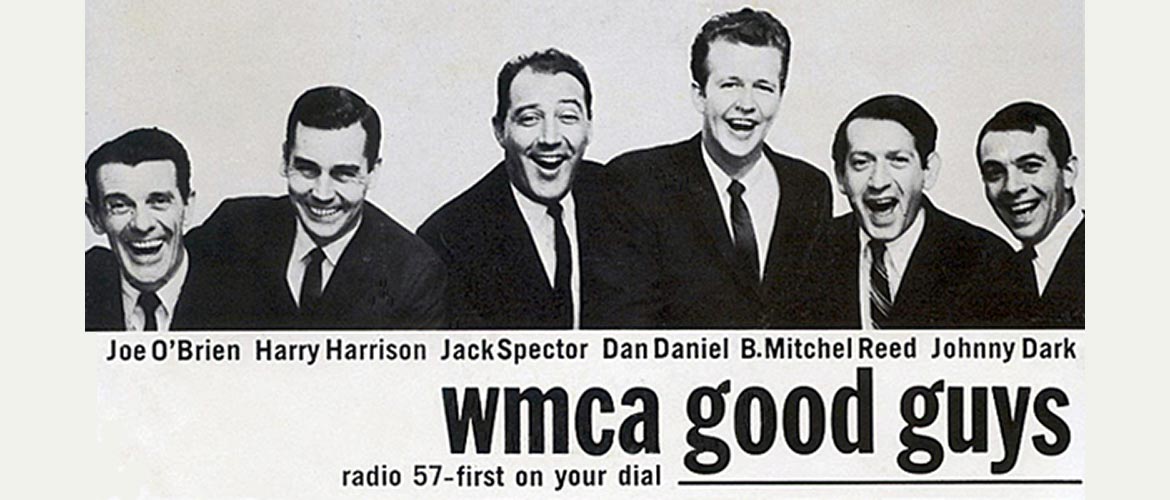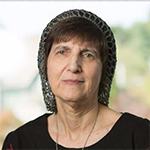No time to read? Listen to the podcast.
Back in the 1950s, Ruth Meyer toiled away as a copywriter at a Kansas City, Missouri radio station. She wanted to be a journalist, but in the Ozzie and Harriett era copywriting, along with such jobs as teaching and nursing, was an allowable job for a woman.
In 1955, Meyer went to WHB, owned by arguably the most influential man in radio, Todd Storz. It was Storz who created Top 40, the mix of rock and roll records and fast-talking DJs that led radio into its second Golden Era and dominated the AM dial for some three decades.
Crossing paths with Storz changed Meyers’ life.
All their program directors had more resources and money at their disposal than Meyer did, along with one more advantage that could not be overcome.
Storz quickly realized that Meyer had an ear for hit music and an eye for spotting talent, and he became her mentor. So when Meyer struck out for New York City, and eventually WMCA, she carried with her Storz’s glowing recommendation. It wasn’t nearly enough to offset Meyer’s two X chromosomes.
“It was the fifties,” said Lesley University Associate Professor of Communication and Media Studies Donna Halper. “Although she was hired by general manager Steve Laubinski, who knew Storz and Meyer’s work from Kansas City, Laubinski had to hire her as promotions director. He couldn’t give Meyer the program director title.”
Halper, author of the book Invisible Stars: A Social History of Women in American Broadcasting, said that it wasn’t until 1961 that Meyer was officially given the title of program director, the job she had be doing for three years. By that time, WMCA faced competition from three of New York City’s biggest radio stations, WMGM, WINS and WABC. All their program directors had more resources and money at their disposal than Meyer did, along with one more advantage that could not be overcome.
All three of them had signals that were ten times more powerful than WMCA’s, leaving Meyer with a listening audience a fraction of the size of her competitors.
But listeners didn’t care.
All they knew was what the heard on the air, and what they heard on the air was Meyer’s domain. She decided to fight for ratings not on the air but in the hallways. By turning her six, thirty-something, ego-driven disc jockeys into a team. She gave the team a name.
The WMCA Good Guys.
“The DJs didn’t want to be the WMCA Good Guys,” Halper said. “But Meyer was a consummate manager.” She not only corrected the DJs when they did something wrong, she was known to march into the studio and praise them profusely when they did something right.
Her unorthodox behavior allowed Meyer to transform “the WMCA Good Guys” from a catchphrase into a team that worked together, attended promotional events together and even sang jingles on the air together.* The WMCA Good Guys became the epitome of New York cool, simultaneously capturing the grit and sophistication of New York City.
Meyer had found the sweet spot.
One by one, the Big Three crumbled. WMGM switched to a good music format in 1962. WINS, the station synonymous with rock and roll in New York flipped to an all-news format in 1965.
And then there were two.
WMCA and WABC became New York’s David and Goliath story. Because of it’s more powerful signal, WABC always had the largest audience and the highest ratings. But, in New York City, where the two stations’ signals overlapped at full strength, Meyer won the ratings battle every time.
In 1968, WMCA changed its upper management and the new general manager used a single dip in ratings to show Meyer the door. WMCA became a talk station, returned to Top 40 and then bounced back to talk. It was never a ratings contender again.
Meyer stayed in New York, where one of her jobs after leaving WMCA was converting WHN** into New York City’s first country music station. Her success was not without its irony. WHN first went on the air in 1921. However, between 1948 and 1962 it was known by the call letters WMGM.
Yes, Meyer rebuilt the station she had vanquished a decade earlier. It may have been ironic, but it was far from her greatest accomplishment.
As Halper noted, “When Meyer started at WMCA, the trade papers referred to her as a woman program director. But with her success they dropped ‘woman’ from her description.”
When Meyer passed away in her native Kansas City in 2011, she left behind a legacy that remains unrivaled in the annals of New York radio. She died a program director, a manager, a mentor, a role model and a legend.
Everything but a woman.
**For the record: For three summers during the mid-1960s I worked at WHN as a broadcast engineer.
Start your Sunday with a laugh. Read the Sunday Funnies, fresh humor from The Out Of My Mind Blog. Subscribe now and you'll never miss a post.
Mind Doodle…
On a cold March night in 1965, nighttime WMCA Good Guy B. Mitchell Reed (also known as BMR) broadcast his final New York show. After two years in the city, Mitch was heading back to Los Angeles. I was visiting the station that night when someone on the staff suggested we give Mitch a WMCA bon voyage. About fifteen minutes later, Mitch was surprised on the air when the engineer played the Good Guys singing a song that ended with “Open up those Golden Gates, BMR is on his way,” to the tune of “California Here I Come.” I am proud to say I sang on that song. It was my first recording gig. Also, my last. You can listen to it here. If you pay very, very close attention it will do you no good. You’ll never hear my voice. But I’m in there, proudly singing the lyrics from memory.
Donna L. Halper, Ph.D., is an associate professor of Communication and Media Studies at Lesley University, Cambridge Massachusetts. She is the author of six books and many articles, including the newly revised and expanded second edition of Invisible Stars: A Social History of Women in American Broadcasting and Boston‚ Radio 1920-2010, which tells the story of Boston radio in words and pictures. She is a respected and experienced media historian whose research has resulted in appearances on both radio and TV, and she’s been quoted in newspapers, magazines, journals and college text-books. She graduated from Northeastern University in Boston, where she earned three degrees (a BA and MA in English and a M.Ed in Counseling), and was the first woman announcer in the school’s history. She received her doctorate in Communication from the University of Massachusetts/Amherst, writing her dissertation on how early radio changed American society. Dr. Halper has had a successful career in broadcasting, including more than 29 years as a radio programming and management consultant in markets of all sizes all over North America‚ In addition to her long career in both radio and print, she is well-known for discovering the rock group‚ Rush, who dedicated their first two albums to her. Prior to Lesley, she spent 18 years as an instructor at Emerson College in Boston, where she taught in the Journalism Department and in the Institute for Liberal Arts where, in 1995, she was named Emerson’s Instructor of the Year. Dr. Halper is a frequent public speaker, giving presentations on such topics as the history of broadcasting, ham radio history, women’s history, baseball history and popular culture. Since 1984, she has been the advocate for an adult with autism, and has worked as a mentor, a tutor and a Big Sister. Dr. Halper has written book reviews for academic journals, and she also writes free-lance articles for magazines and newspapers. She blogs at https://dlhalperblog.blogspot.com/.


More great stuff, Jay. Unfortunately the WMCA signal didn’t reach Rochester, where I was listening to WBBF and from Buffalo WKBW. As for Ruth Meyer, I always think that there are only two things that I ever wanted to be really good at, writing and managing. Things that women have excelled at.
Hi Nick…
Well, that’s what you get for living in Rochester. Though WKBW had some great disc jockeys, including Gene Nelson (one of my heroes) and Joey Reynolds (who would have been if he’d given me an interview a couple of months ago).
Ruth Meyer, though, was something else. I never met her, but I did meet her arch nemesis, Rick Sklar, the program director at WABC. She must have been one smart human being to keep ahead of Sklar, who was like a human promotion machine.
As for writing and managing, have you thought about using a pseudonym (at least for writing)?
Just my two cents.
— jay